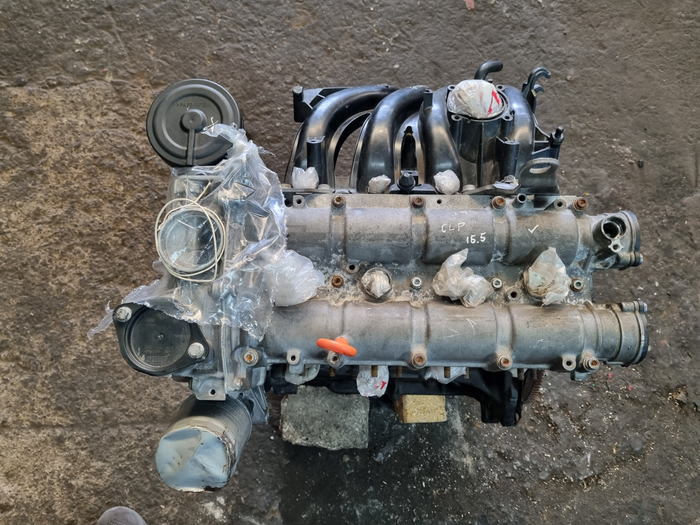Avoid operational issues with a well-tuned clp engine.
Avoid operational issues with a well-tuned clp engine.
Blog Article
Just How a Clp Engine Can Enhance Efficiency in Different Industries
The arrival of CLP engines notes a considerable shift in functional performance across numerous markets, driven by their ability to enhance fuel intake and lessen downtime. As organizations increasingly prioritize sustainability along with efficiency, the role of CLP engines ends up being even a lot more critical.
Introduction of CLP Engines
CLP engines, or Continuous Liquid Propellant engines, represent a substantial advancement in propulsion modern technology, specifically for area applications. These engines utilize a continuous feed system that permits the continual expulsion of propellant, causing improved effectiveness and performance contrasted to conventional solid or hybrid propulsion systems. By keeping a continuous flow of fluid propellant, CLP engines can attain a lot more accurate thrust control, which is critical for navigating spacecraft in various mission situations.
The design of CLP engines integrates innovative materials and innovative gas management systems. clp engine. This causes decreased weight and increased dependability, important elements for long-duration area missions. The continuous procedure minimizes the danger of burning instability, a typical obstacle in conventional rocket engines.

Benefits in Manufacturing
The manufacturing of Continuous Fluid Propellant (CLP) engines presents numerous noteworthy benefits that boost both performance and cost-effectiveness. One of the primary advantages is the structured manufacturing procedure, which minimizes the complexity related to standard propulsion systems. By using fluid propellant, producers can accomplish greater precision in engine efficiency, bring about enhanced energy output and lowered waste.
In addition, CLP engines assist in a higher level of modularity, permitting for much easier integration into numerous production lines. This adaptability can substantially lower lead times and improve total operational adaptability. Using CLP modern technology additionally has a tendency to reduce the demand for substantial maintenance as a result of fewer relocating parts, which equates into minimized downtime and operational prices.

Applications in Logistics
Leveraging Constant Fluid Propellant (CLP) engines in logistics provides considerable benefits in operational effectiveness and dependability. These engines offer a robust remedy for numerous transport demands, making it possible for the smooth activity of items throughout substantial ranges. The inherent layout of CLP engines permits regular power result, which converts right into smoother and much more predictable transportation schedules.
Among the crucial applications of CLP engines in logistics is in heavy-duty freight transportation, where they can drive both ground and airborne automobiles. Their capability to maintain high efficiency under differing tons problems makes certain that shipment timelines are satisfied, thus enhancing consumer contentment. Furthermore, CLP engines can be integrated right into automated logistics systems, facilitating real-time monitoring and maximizing course preparation.
Additionally, the resilience of CLP engines minimizes upkeep downtime, permitting logistics companies to maximize their operational capacities. This is specifically helpful in warehousing operations, where performance in managing and transferring items is important. As logistics continues to advance, the assimilation of CLP engines represents a forward-thinking method that not just enhances efficiency however also sustains the industry's growing needs for dependability and speed.
Influence on Energy Performance
How do Constant Fluid Propellant (CLP) engines improve power efficiency in transportation? CLP engines make use of a constant flow of fluid fuel, enhancing burning procedures and internet preserving a secure drive output. This style decreases energy losses connected with standard burning engines, where fuel delivery can differ and bring see this page about inefficiencies.
The constant procedure of CLP engines enables a more effective thermal cycle, resulting in higher certain impulse contrasted to standard engines. clp engine. This translates to decreased fuel usage for the very same amount of work done, substantially decreasing operational expenses across different transport fields, consisting of aviation and maritime industries
Furthermore, the capability of CLP engines to preserve ideal performance under varying load conditions decreases the requirement for regular acceleration and deceleration, additionally improving gas effectiveness. Enhanced energy efficiency not only adds to cost savings but additionally leads to decrease greenhouse gas exhausts, straightening with international sustainability objectives.
Future Trends and Innovations
Arising improvements in Constant Liquid Propellant (CLP) engine technology guarantee to revolutionize the landscape of transportation performance and sustainability. As sectors pivot towards greener options, CLP engines stand at the forefront, incorporating cutting-edge products and style approaches that enhance efficiency while decreasing ecological impact.
One of one of the most appealing fads is the fostering of hybrid systems that combine CLP engines with renewable resource sources. This harmony can maximize fuel consumption and lower discharges, aligning with worldwide sustainability objectives. Additionally, improvements in computational fluid characteristics (CFD) are assisting in the design of even more aerodynamically effective engines, leading to lowered drag and enhanced gas efficiency.
Furthermore, the advancement of smart tracking systems is readied to improve operational effectiveness. These systems leverage data analytics and IoT modern technology to enhance engine efficiency in real-time, guaranteeing that the engines run within their most effective criteria.
As study remains to discover alternate propellant solutions-- such as biofuels and artificial fuels-- the future of CLP engines looks promising. By harnessing these advancements, sectors can not only boost their performance however additionally contribute considerably to a cleaner, more lasting future in transport.
Final Thought
To conclude, CLP engines stand for a substantial development in efficiency throughout multiple industries. Their capability view publisher site to maximize gas consumption and decrease operational expenses, incorporated with a continual feed system, enhances power output and operational dependability. The combination of innovative products and less relocating components minimizes maintenance requirements, while alignment with sustainability goals settings CLP engines as an essential modern technology for the future. Proceeded technology in this area guarantees more renovations in performance and ecological efficiency.
Report this page